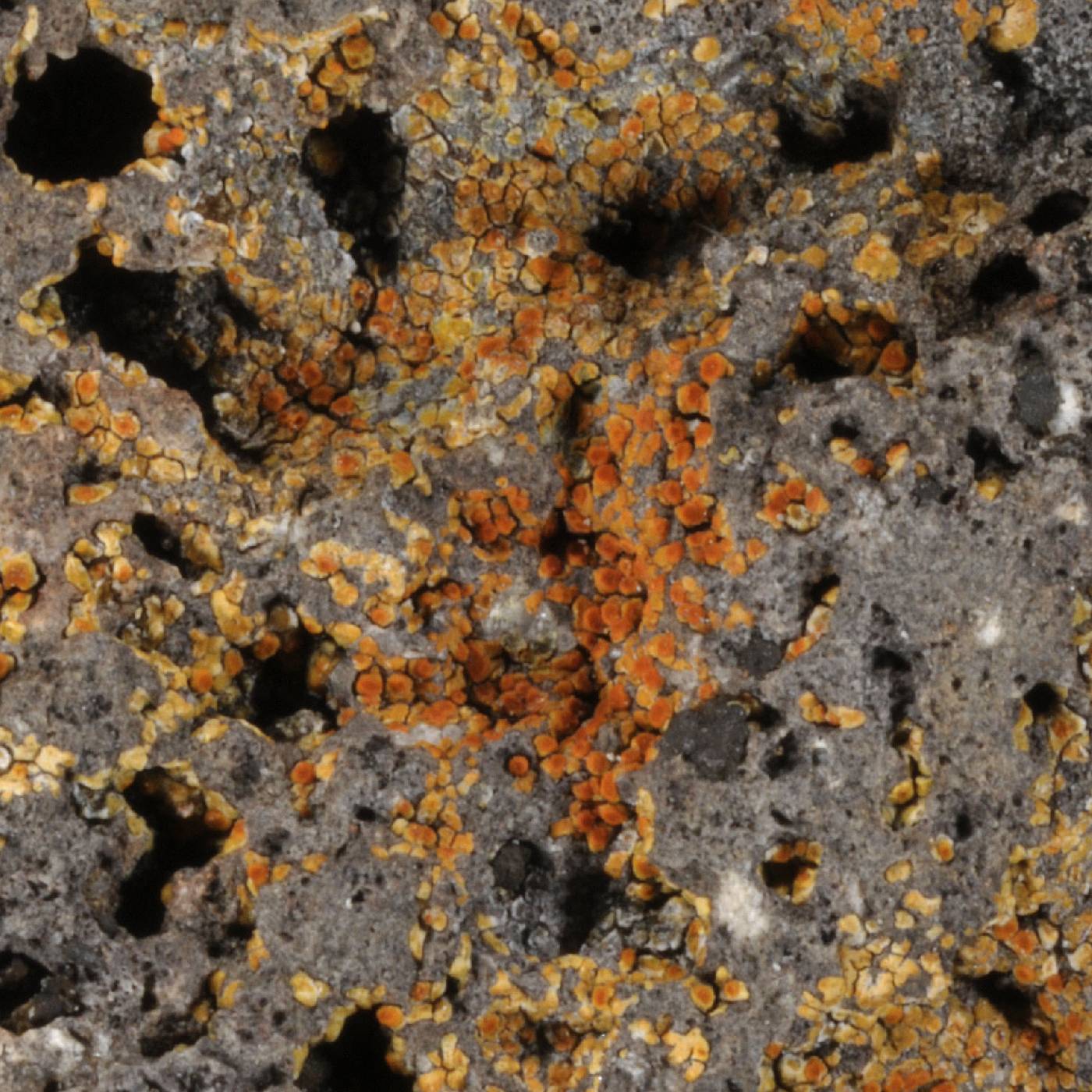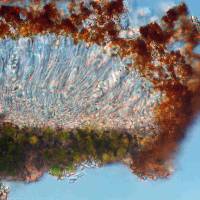
- Home
- Search
- Images
- Species Checklists
- US States: O-Z >
- US National Parks
- Central America
- South America
- US National Parks
- Southern Subpolar Region
|
|
|
|
Family: Teloschistaceae
|
MB#836954 Diagnosis. A saxicolous species with thalli composed of dull, yellow-orange to deep orange, angular areolate to indistinctly subsquamulose, loosely dispersed to closely aggregated areoles, their surface epruinose or farinose whitish pruinose (particularly if growing on calcareous substrates), without a distinct prothallus, apothecia immersed to adnate, disc epruinose, deeper in color than the thallus; (6.6–)8.0–10.4(–11.8) × (4.2–)4.7–6.0(–6.8) μm, with a moderately thickened, (1.4–)2.1–3.3(–3.7) μm wide septum (n = 27). The new species is reliably distinguished from other morphologically extremely similar species in Squamulea by its different ITS sequence. Type. Ecuador, Galápagos: San Cristóbal, hills S of Punta Pit at the NE-coast of the island, 0°43′8″S, 89°14′36″W, 44 m alt., dry zone, NE-exposed cliff of basalt lava with some Cordia lutea shrubs and abundant Mentzelia aspera as ground cover, on rock, 21-Apr-2007, Bungartz, F. 6146 (CDS 34358‒holotype; GenBank Accession number nrITS: MT967452). Chemistry. Thallus and apothecia P–, K+ purple, C–, KC± purplish, UV– (dull); thallus and apothecia with a large proportion of parietin and smaller proportions of teloschistin, fallacinal, parietinic acid and emodin (chemosyndrome A sensu Søchting 1997). Ecology and distribution. Currently, known only from the Galapagos and possibly endemic; most specimens were collected in the humid zone, some in the transition zone, and even a few in the dry zone; on exposed rocks and boulders, occasionally in crevices; frequently at dust-impregnated, nitrophytic, slightly calcareous sites, there growing with other, similar species of Squamulea (e.g., S. humboldtiana, S. phyllidizans). Etymology. The epithet chelonia recalls Greek mythology, ‘khelônê’ meaning tortoise. Chelone was a nymph changed by the Greek gods into a tortoise. The archipelago is of course named for its most iconic species, the Galapagos Giant Tortoise (the genus Chelonoidis is endemic to the archipelago). Here, we select this epithet for one of the lichens that might be endemic as well. Notes. Squamulea chelonia is morphologically virtually indistinct from specimens of S. subsoluta s.l. and specimens are extremely similar to S. oceanica too. All have minute, thin and poorly developed areoles that are typically not squamulose, if at all with angular, barely subsquamulose edges. On calcareous substrates, thalli of S. chelonia are often pruinose. Galapagos specimens appear to have more closely aggregated areoles than the scattered ones of S. oceanica, which typically develop from a thin, ± shiny hypothallus. None of this morphological variation is well-defined and the species must be considered cryptic. |












